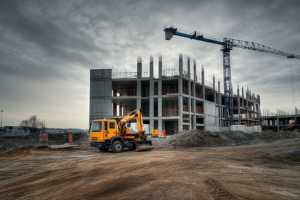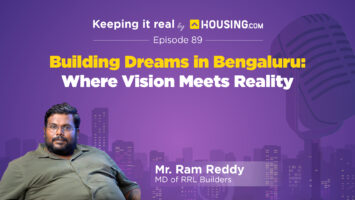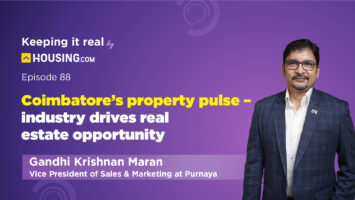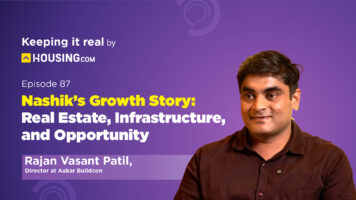If the unfolding of Mumbai’s urban churn in the eastern suburbs is to be seen in real time, then there is no better place than Mulund. Move through its leafy lanes and you will instantly notice how a once-sturdy co-operative society, built in the late 1970s, is making way for a gleaming multi-tower complex down the road. For years, peeling paint, cracked beams and an elevator that functioned for just a few days every month had been a common sore point for many of Mulund’s old timers. But that is fast changing, with a contrast emerging. Mulund is today at the frontline of Mumbai’s redevelopment surge in the eastern suburbs.
For Mulund’s residents, the demand for safer, barrier-free and accessible housing reached a tipping point where redevelopment became a necessity rather than an aspiration. Developers of repute too stepped in recognising this urgency to move away from cosmetic repairs, and usher in redevelopment that completely resets the complete housing ecosystem. The new developments in Mulund are taller buildings but are importantly being developed as functional and sustainable communities. Usage of energy-efficient systems, landscaped green spaces, designs for inter-generational layouts and recreational spaces made for the senior members are all becoming standard features. Mulund’s transformation is as much about enhancing lifestyles as it is about upgrading structures.
One question that is pertinent in the case of Mulund is, what makes its redevelopment projects distinctive? The answer lies in a perfect alignment of demand and supply that this suburb has to offer. For Mulund’s ageing societies, redevelopment will be the only viable way to unlock land value and secure long-term housing potential. There is a rare mix of opportunities in Mulund. The availability of large land parcels, rising demand for premium homes, and strong infrastructure growth make it a rare mix for developers.
Mulund’s strategic location strengthens its proposition. With the upcoming Metro Line 5, the Goregaon–Mulund Link Road, the Eastern Express Highway and the Mulund–Airoli Bridge, this eastern suburb is very well connected to South Mumbai, Navi Mumbai and Thane. The added green cover blends in with its natural serenity merging with urban convenience that makes Mulund rise to be the most attractive of redevelopment frontiers that Mumbai has to offer.
Strong financial dynamics add further weight to Mulund’s appeal with property values here steadily appreciating. Supported by a strong demand for 2 and 3 BHK units, redevelopment projects are benefitting from enhanced Floor Space Index (FSI), unlocking of additional saleable area to fund construction and create attractive resale opportunities. Through redevelopment opportunities, older residential societies embrace modern housing without prohibitive costs, while developers secure valuable, centrally located inventory proving to be a win-win situation that tells us the story of the growing scale of projects in the area.
Among the reasons for the redevelopment momentum in Mulund is the shift in public trust. Earlier, many government-sponsored housing and redevelopment schemes failed after struggling with execution delays, regulatory shifts and eligibility uncertainties. This left many housing societies skeptical, and people remained stuck to peeling wall paint and cracked beams. With government initiative, private developers stepped in. They have, in contrast, brought clarity of timelines, transparent processes and customised solutions. Like many other suburbs, Mulund has transformed in its perception of developers being mere builders and into long-term partners of community renewal. Developers have committed hundreds of Crores to redeveloping Mulund and leveraging this trust through projects that go well beyond transactional deals offering reliability and a vision of future-ready living.
Mulund’s changing skyline is an answer to this outcome. Large-scale complexes equipped with podium parking, green courtyards, community halls and mixed-use facilities have brought commercial and residential life together. As integrated ecosystems, they cater to diverse age groups and lifestyle needs with offerings for young professionals, nuclear families and senior citizens alike. Mulund’s redevelopment story, therefore, is far more than a localised trend. It is a blueprint for how Mumbai’s suburbs can look at renewing themselves in the face of ageing infrastructure, rising aspirations and a shifting balance of trust between state schemes and private players. If the rejuvenation is managed thoughtfully, Mulund’s redevelopment plan could set a new template for a more organised people-centric urban renewal. A change where redevelopment is not simply about demolishing the old and building afresh, but about creating resilient, inclusive and sustainable neighbourhoods that will usher in modern suburban living for generations to come.
-The author is chairman and managing director, Sheth Realty.
| Got any questions or point of view on our article? We would love to hear from you. Write to our Editor-in-Chief Jhumur Ghosh at jhumur.ghosh1@housing.com |







